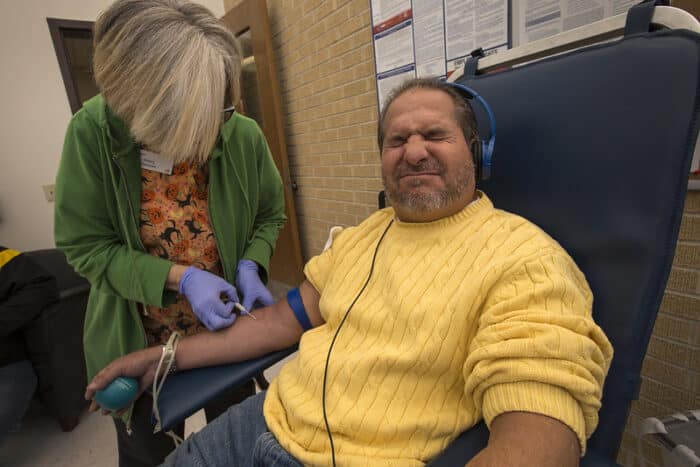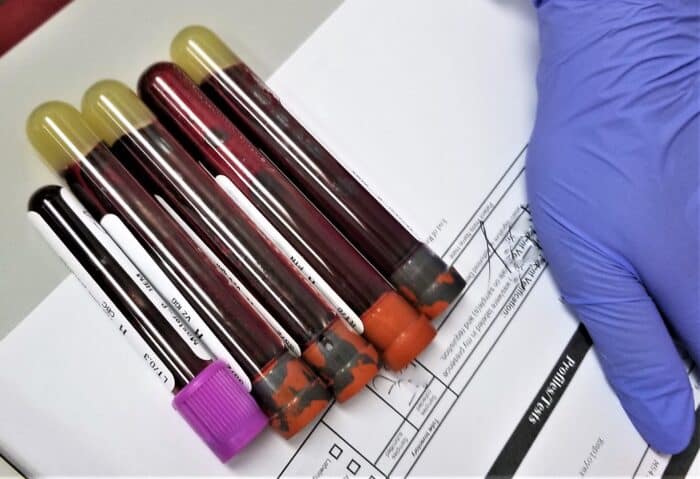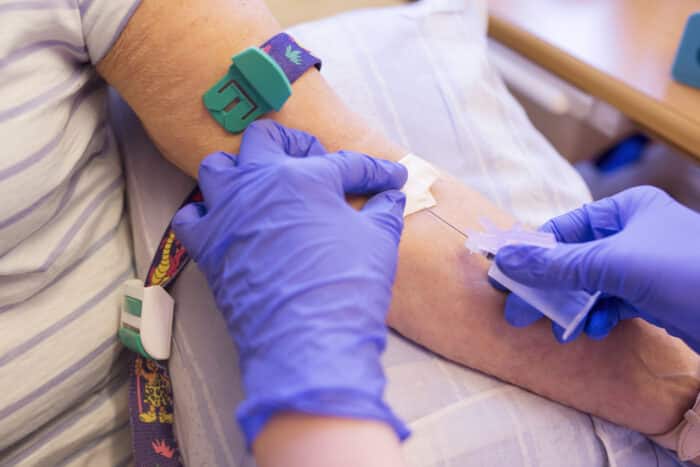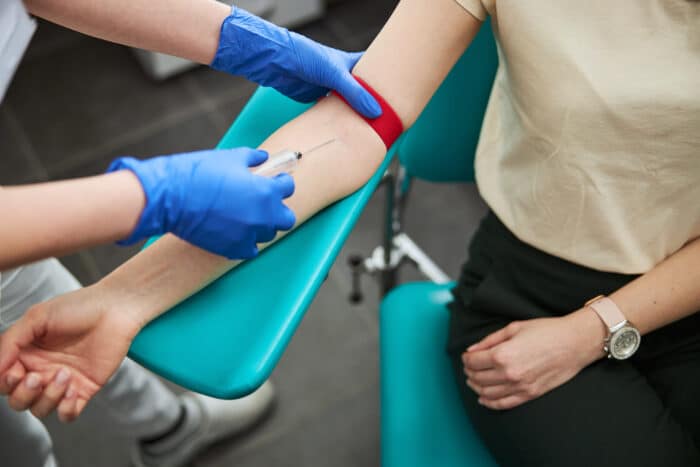If you have ever wondered about the important role of phlebotomists in the healthcare industry,
Or if you are interested in entering this rewarding field and are wondering how much a phlebotomist earns, you will find all your answers here.
In this article, we will dive into the basics of what a phlebotomist is and what they do, how to become one, how much they earn, and what is the future job outlook for phlebotomists.
So, let’s tune in.
What is a Phlebotomist? And What Do They Do?
A Phlebotomist can be defined as a healthcare professional who is qualified to perform blood draws and venipunctures for sample collection.
They are considered to be the backbone of the healthcare team since their job role helps in the most essential aspect of healthcare, diagnosing any abnormalities.
Now, it must be apparent that the main responsibilities of a phlebotomist are drawing blood and collecting samples, but what do they do apart from this?
Let’s take a look.
In addition to phlebotomy and venipunctures, phlebotomists are also responsible for: :
- Patient Interaction and Communication: Explaining procedures and addressing patient concerns.
- Sample Labeling and Documentation: Ensuring accurate specimen information and accurate record-keeping.
- Sample Handling and Transport: Securely handling and transporting blood samples to the laboratory.
- Specimen Processing and Testing Support: Assisting with basic specimen processing tasks for testing.
- Inventory Management: Managing and restocking phlebotomy supplies.
- Infection Control and Safety: Following strict protocols to maintain a safe environment during blood collection.
- Equipment Maintenance: Ensuring phlebotomy equipment is well-maintained and sterilized.
- Patient Identification Verification: Verifying patient identity to prevent errors.
See more: What is a Phlebotomist
Phlebotomist Salary: How Much Do They Make?
Now that you know what a phlebotomist is, you might be wondering about how much phlebotomists make in a year.
Let’s explore.
The U.S. Bureau of Labor Statistics (BLS) states that according to the 2022 census, the national average annual mean salary earned by phlebotomists is $40,580, or $19.51 per hour.
It is important to emphasize that these figures are dependent on many influencing factors such as years of experience, job location, and certifications.
For example, a certified phlebotomist who has 3 years of experience and works in New York will probably earn significantly more than one who has only a year’s experience and works in Louisiana.
Certified Phlebotomists Salary By State
As mentioned earlier, the average salary for certified phlebotomists differs across each state.
Let us take a look at the top five highest-paying industries for phlebotomists, according to the BLS:
- Scientific Research and Development Services, with an annual mean salary of $47,770 per year.
- Outpatient Care Centers, with an annual mean salary of $47,710 per year.
- State Government Services, with an annual mean salary of $46,160 per year.
- Specialty Hospitals, with an annual mean salary of $45,320 per year.
- Health Practitioner’s Offices, with an annual mean salary of $44,780 per year.
Additionally, the top five highest-paying states for phlebotomists include:
- California – $50,470
- Massachusetts – $47,530
- District of Columbia – $47,160
- Washington – $47,090
- New York – 46, 960

Do You Want To Become a Phlebotomist? Check Out Free Phlebotomist Masterclass!
In our masterclass you learn:
- How to be a Phlebotomist faster…in just 2 months!
- Avoid student debt & driving to classes
- #1 thing employers want from Phlebotomists
- How to stand-apart & get a university certificate for a strong resume
How to Become a Phlebotomist
If you have decided that becoming a phlebotomist and helping people is what you want to pursue, the next thing you might be wondering is how to become one.
See more on How to Become a Phlebotomist here.
We are here to help you with the whole process, here are the four easy steps you need to take to become a phlebotomist:
Complete your high school diploma-
The minimum and only requirement you need to start with the process of becoming a phlebotomist is to obtain your high school diploma or a GED.
Enroll in a phlebotomy training program-
The next step is for you to choose an accredited phlebotomy training program that suits you best.
There are two main methods of completing your training, either by getting a certificate/diploma program that is usually offered by a community college or vocational school, or by completing an online course.
Choosing an online program is usually the most recommended, simply due to the many benefits it offers, such as:
- Allows flexibility, where you can learn from anywhere, even from the comfort of your own room.
- Self-paced courses, which are offered by a few online programs, allow you to learn at your own pace and time schedule.
- Highly affordable course, which can be completed for under $2,000, so that you can avoid taking any unnecessary student loans.
- It allows you to complete your course much faster, in as little as 2 to 4 months, which in turn allows you to enter the workforce faster.
Also read: Online Phlebotomist Classes
Gain Experience-
After you complete your training program, the next step is to gain practical experience in the form of externships or internships.
Some online programs offer externship opportunities after you complete their course, which is why they are recommended.
See: How To Choose Phlebotomist Classes Online?
Get Certified-
This is a common dilemma that many phlebotomists wonder about, if getting certified is really necessary.
To answer briefly, even though certification is not necessary in many states, employers do prefer certified candidates over uncertified ones,
So getting certified might just be worth it.
There are many phlebotomy certifications out there, however, the three most common and legitimate ones are:
- Phlebotomy Technician (PBT) certification, which is offered by the American Society for Clinical Pathology (ASCP).
- Certified Phlebotomy Technician (CPT) certification, which is offered by the National Healthcareer Association (NHA).
- Registered Phlebotomy Technician (RPT) certification, which is offered by the American Medical Technologists (AMT).
Apply for Jobs-
After you get certified as a phlebotomist, you can start applying for your desired positions.
Phlebotomists Job Outlook
The job outlook for phlebotomists looks fairly positive for the next few years. This is because the healthcare industry is constantly growing with the rise of the baby boomer population, and the demand for phlebotomists is also increasing.
According to the statistics reported by the BLS, the projected employment growth for phlebotomists is expected to be 10% from 2021 to 2031, which is much faster than the national average.
So, becoming a phlebotomist certainly looks positive for the next decade with a good potential job outlook.
Conclusion
In conclusion, the salary of a phlebotomist is an important factor to consider when entering this rewarding healthcare field.
While the pay may vary depending on factors such as location, experience, and employer, it is clear that phlebotomists can earn a competitive and stable income. A career as a phlebotomist can offer a fulfilling and financially rewarding path in the healthcare industry.
Related Resources:
- Traveling Phlebotomist
- How Long Does It Take To Become a Phlebotomist
- Phlebotomist Requirements
- Phlebotomist Skills
- Phlebotomist Programs
- Day in the Life of a Phlebotomist
- Phlebotomist Job Description
- What is the Main Responsibility of a Phlebotomist?
- Which Two Skills are Important for a Phlebotomist?
- What Do You Need To Be a Phlebotomist?
- Phlebotomist Degree
- Phlebotomy Externship
- Mobile Phlebotomist
- How To Get a Phlebotomy Certification
- What Jobs Can I Get With a Phlebotomy Certificate?
- How Long is a Phlebotomy Course?
- Phlebotomist Nurse
- Is a Phlebotomist a Nurse?
- Phlebotomist Training
- Certified Phlebotomy Technician
- Cardio-Phlebotomy Technician
- Online Phlebotomy Classes
- Order of Draw Phlebotomy
- Phlebotomy Internship
- Phlebotomy Interview Questions
- 4-Week Phlebotomy Classes Online
- Venipuncture vs. Phlebotomy: Differences
Related Articles
-
How to Be Successful in College in 2022 – 7 Simple Tips to Succeed
-
How Do Scholarships Work? Read This First…Truth is Shocking
-
7 Best College Majors 2024: What Should I Major In?
-
How to Choose a College – 10 Things You Must Consider in 2024
-
Why Go to College? Top 13 Benefits for Adult Students in 2022
-
Top 5 Best Alternatives to Community College for 2024









